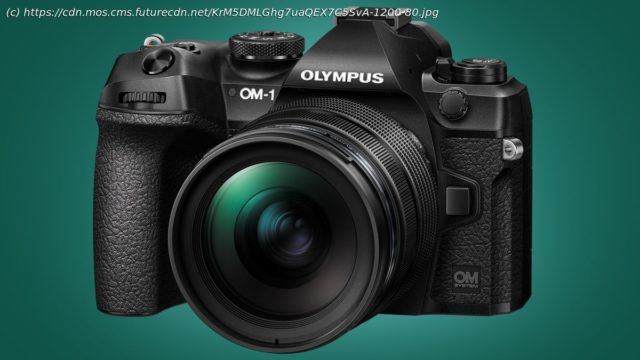The OM System OM-1 is a next-gen Micro Thirds Camera for landscape and wildlife photography fans. Here’s everything you need to know, from its release date to its specs.
The OM-1 is back – almost fifty years after the arrival of Olympus’ classic SLR, the OM-1 name has made a surprise return on the debut mirrorless camera from OM Digital Solutions. It may have the OM-1 name, but the new Micro Four Thirds camera is really a sequel to the Olympus OM-D E-M1 Mark III from early 2020. This means it lacks the vintage styling of its trailblazing predecessor, but the new OM-1 does bring plenty of its own innovations. Powered by a new 20MP stacked BSI Live MOS sensor and TruePix X engine, the OM System OM-1 takes Micro Four Thirds camera performance up a notch or two, and is mainly aimed at landscape, wildlife and macro photographers. Because the sensor is ‘stacked’, a chip design that ensures speedy read-out speeds, the OM-1 can shoot in blackout-free bursts of 50fps with continuous autofocus (using its electronic shutter) and also records 4K/60p video with 10-bit 4:2:2 color depth internally. A slight achilles’ heel of previous E-M1 series cameras, autofocus performance, has also been given a big upgrade. The OM-1 has 1,053 phase-detection autofocus points and promises Quad Pixel AF, with software tracking for a range of subjects from birds to motorbikes. There’s even AF tracking for trains and helicopters. So what other treats does the new Olympus, or rather OM System, OM-1 bring? Read on to learn all about this exciting mirrorless camera and our early thoughts on its prospects. The OM System OM-1 will be available to buy in early March for $2,199 / £1,999 (around AU$3,800) body-only. That’s a fairly big jump up from the price of the Olympus OM-D E-M1 Mark III, which launched for $1,799.99 / £1,599.99 / AU$3,099, but the OM-1 does also inherit features from the Olympus OM-D E-M1X (which had a launch price of $2,999 / £2,799). You will also be able to buy the OM System OM-1 with an M. Zuiko Digital ED 12-40mm F2.8 PRO II kit lens. This bundle will cost $2,799 / £2,499 (around AU$4,750) and will also be available in early March. Overall, this pricing is around what we expected for the OM System OM-1, though it does put it in a potentially tricky spot between its closest rivals. The Fujifilm X-T4, for example, is currently only $1,699 / £1,399 / AU$1,999 body-only, which is compelling value, despite its older tech. Full-frame cameras like the Canon EOS R6 ($2,499 / £2,499 / AU$4,499) also aren’t too much pricier than the OM-1. Sensor size isn’t everything, of course, but the OM-1’s performance needs to back up its claims if floating voters aren’t going to pick one of those rivals (if they haven’t already). The OM System OM-1 is physically almost identical to the Olympus OM-D E-M1 Mark III, bar an upgraded electronic viewfinder (EVF) and rear screen. Because it lacks the E-M1X’s built-in battery grip, it’s a small, lightweight camera that weighs only 599g (without a lens). It’s a little thicker than the E-M1 Mark III at 72.7mm deep, but only by a few millimeters. The main control differences from its spiritual predecessor are its dials – rather than having these on the top plate, you’ll now find them on the front and back of the camera. This is a more traditional setup that’ll be comfortably familiar to pros.






